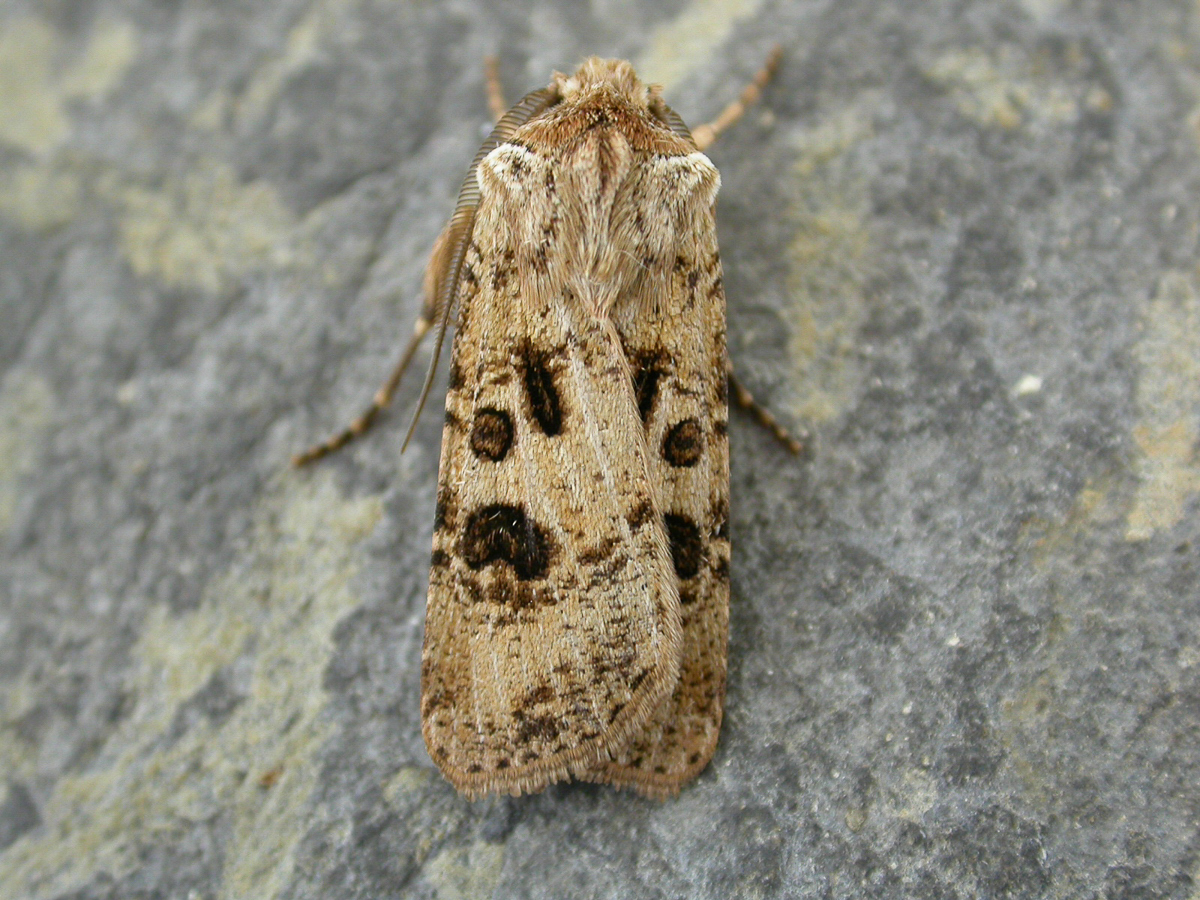
Photo © Andy Mitchell
The heart and club (Agrotis clavis) is a moth of the family Noctuidae. It is distributed throughout the Palearctic realm.
The common name of this species refers to the supposed shapes of the bold dark stigmata on the usually pale forewings. In this species all the stigmata have a rounded shape, contrasting with the elongated claviform stigmata of the much commoner heart and dart. The hindwings are grey, usually much darker than in heart and dart and turnip moth. The differences are not consistent however; they are highly variable in both colour and markings, and identification of atypical or worn examples may prove impossible without examination of genitalia.See Townsend et al. The wingspan is 35-40 mm. The main habitat is calcareous grassland. The moth flies at night in June and July and is attracted to light and sugar.
The larva , which is, when adult, dark brown with a pattern of black dots feeds on a variety of herbaceous plants (see list below). The young larva feeds on the leaves of the food plant, later feeding on the roots. It overwinters as a full-grown larva in a cavity in the soil before pupating in the spring.
Full list at reference.
Source: Wikipedia
The primary larval foodplants are clovers (Trifolium spp.), docks (Rumex spp.), Fat-hen (Chenopodium album), knotgrasses (Polygonum spp.), mulleins (Verbascum spp.) and Wild Carrot (Daucus carota ssp. carota).